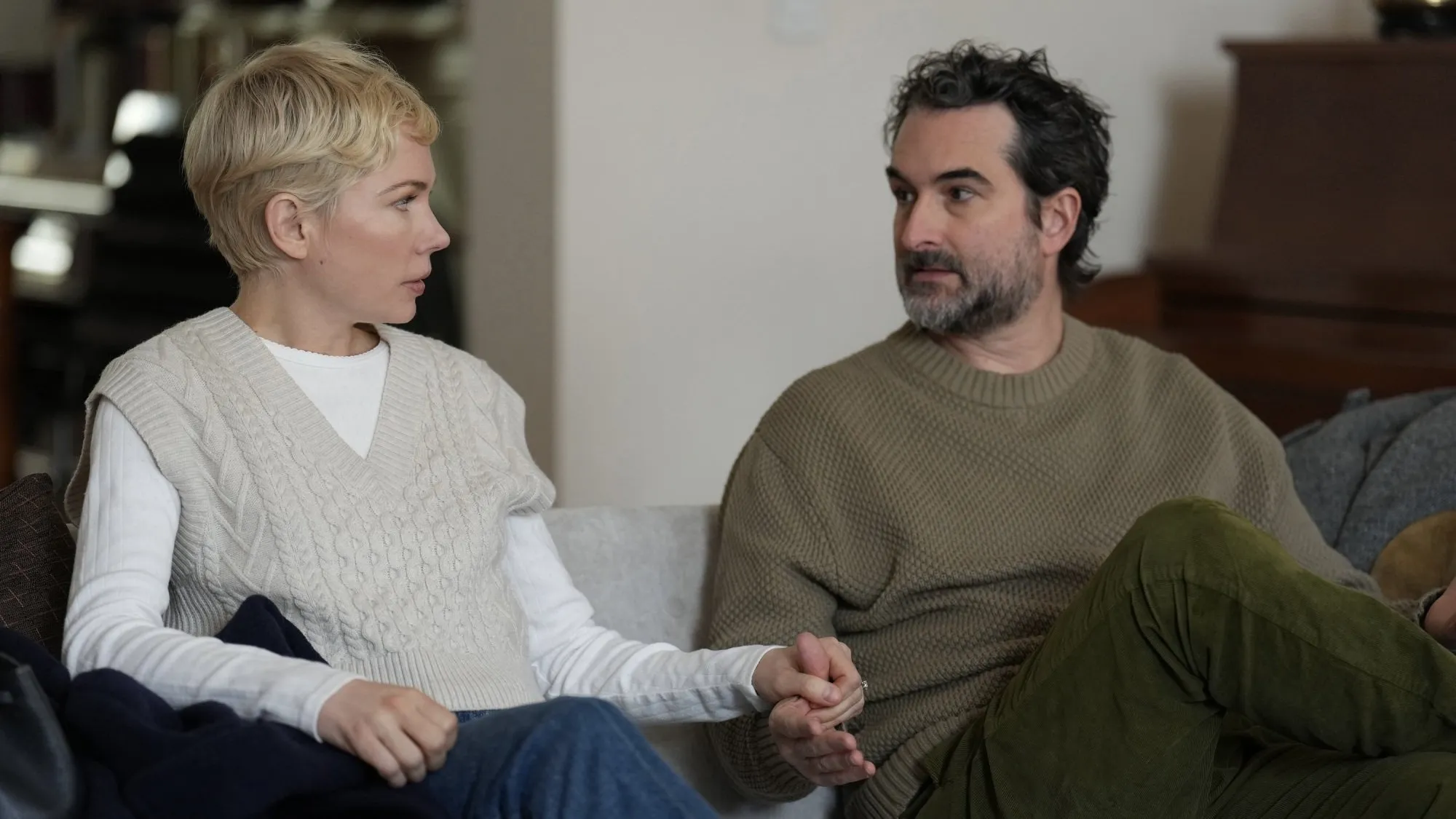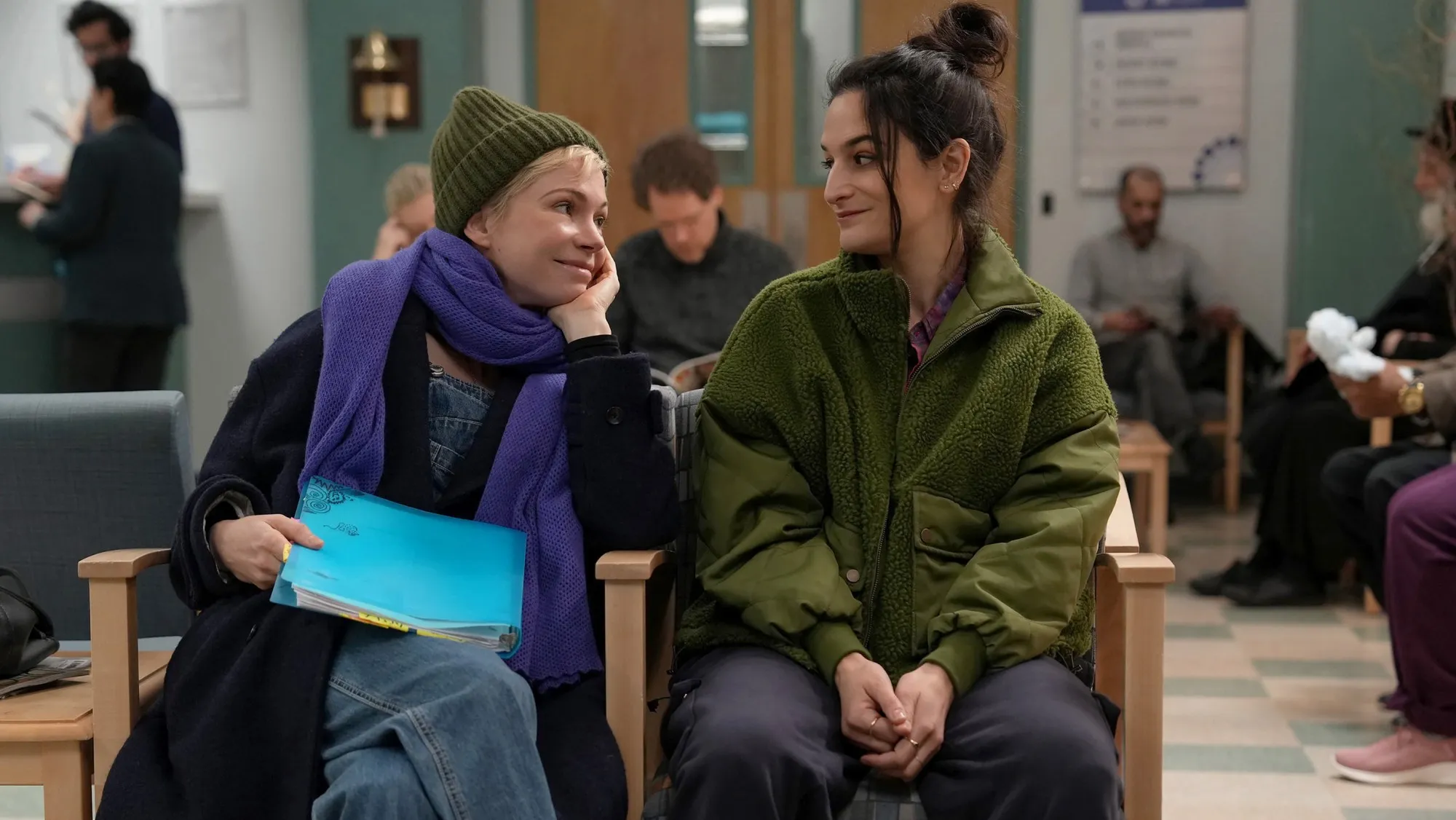In this finite narrative, a terminally ill woman’s rebellious pursuit of intimate freedom unfolds in the quiet spaces between despair and ecstatic liberation. Molly, a woman burdened with the weight of a relentless cancer diagnosis, steps away from a path of quiet resignation into a realm where laughter and sorrow intermingle.
Her struggle to redefine herself in the face of an inexorable end serves as a mirror to our own existential reflections. The narrative unfolds in a carefully measured rhythm—a series of eight concise episodes, each a compact meditation lasting roughly half an hour.
The stylistic choices evoke an immediacy that forces the viewer to confront life’s raw, unvarnished reality. A disarming mixture of wry humor and solemn introspection echoes through each scene, as moments of levity punctuate the dark corridors of uncertainty.
The portrayal of Molly’s defiant shift against fate is provocative and somber, inviting contemplation on the nature of desire and the ephemeral quality of existence. This provocative narrative forces viewers to face the stark reality of life’s fleeting moments and challenges our understanding of desire amid mortality.
The Geometry of Fate and Desire
The narrative unfolds with a disquieting clarity at the moment when Molly, confronted with the stark reality of her metastasized cancer, is forced to reexamine the contours of her existence. This turning point shatters the quietude of her previously measured life, instigating a fervent quest for intimate freedom and self-reclamation.
In that fragile instant, the terminal diagnosis becomes a paradoxical catalyst—a dark revelation that opens the door to both liberation and despair. The shattering of certainty compels her to abandon the comfortable confines of an unsatisfying marital existence in favor of a pursuit that promises genuine connection and ephemeral, yet intense, pleasure.
The series is structured as a series of succinct, evocative episodes that trace the gradual transformation of a woman who is both haunted and emboldened by the shadow of her mortality. With each installment, viewers witness the evolution of Molly’s inner landscape.
Initially, her exploration is tentative—a series of delicate experiments in desire that hint at deeper, unspoken yearnings. As the narrative unfolds, the framework of her relationships becomes a canvas upon which the raw interplay of vulnerability and defiance is painted.
Key turning points punctuate this progression: unexpected encounters that challenge her self-image, a neighbor whose presence oscillates between fascination and repulsion, and the struggles of a steadfast friend who confronts her own silent losses.
The script artfully employs moments of solitary introspection through inner monologues, where the weight of past traumas and the pressing urgency of living authentically are laid bare. The dialogue is not merely conversational; it is a measured dance of words that uncovers hidden fractures and moments of unexpected levity amid despair.
Each exchange, whether laden with bitter irony or tender sorrow, mirrors the internal battle between the ephemeral allure of momentary pleasure and the inevitable decline of life. In this complex interplay, the storytelling invites viewers to question the nature of desire itself—a force that, when illuminated by the grim light of impending loss, transforms into both a refuge and a crucible of self-discovery.
Portraits of Fragility and Ferocity
Molly emerges as a study in contrasts—a woman both delicate and defiant in the face of a life marked by relentless decay. Her condition, a brutal reminder of mortality, forces an urgent reexamination of desire and identity.
Her past carries whispers of torment and unhealed wounds, shaping her pursuit of pleasure as a quiet act of rebellion against fate. There is a tenderness in her vulnerability that coexists with a fierce determination; each moment of laughter is tinged with the weight of inevitable sorrow. Her transformation appears as a slow burn, where humor flickers amidst tears, and the raw pulse of her inner life is brought to the surface in moments of candid confession.
Nikki, who stands by her side, is depicted as a keeper of fragile hope and a bearer of her own concealed burdens. Her role transcends mere support; she evolves into a mirror reflecting both the cost and the beauty of such relentless pursuit. The toll of being a caretaker intermingles with a yearning for personal freedom, resulting in a character whose sacrifices carry a quiet dignity, even as they hint at an internal disintegration.
Steve represents the quiet tragedy of a relationship diminished by unfulfilled needs. His presence is marked by a subdued sorrow, the kind that arises when care becomes a substitute for connection. His inability to understand or meet Molly’s desires ignites a silent revolution within her, propelling her toward paths where passion confronts despair.
The neighbor, whose initial appearance carries an air of unconventional mystique, gradually reveals the profound intricacies of human connection. His interactions with Molly are not mere fleeting encounters but are laden with the tension of unexpected intimacy.
Other figures—medical professionals, social aides, and peripheral acquaintances—add subtle hues to the narrative. Each minor character contributes a distinct note to the composition of control and desire, offering glimpses into the spectrum of human frailty.
In performance, Michelle Williams captures this intricate mosaic with a raw sincerity that punctuates every gesture. Jenny Slate’s portrayal of Nikki radiates a restless energy intertwined with heartfelt sincerity.
Jay Duplass, Rob Delaney, Sissy Spacek, and their colleagues contribute measured strokes of authenticity that solidify the work’s meditative quality, presenting a cast whose interactions probe the silent dialogues of the human soul without ever settling into complacency.
Echoes of Life and Shadow
The series confronts mortality with a startling candor, transforming the finality of death into a force that kindles life’s spark. Molly’s swift reckoning with her limited time ignites a burning desire to experience every fleeting moment, her decisions driven by the raw immediacy of impermanence.
This confrontation with the inevitable sparks a quiet revolution within her, one where each choice becomes a defiant act against the encroaching void. The urgency of her experience invites a meditation on the nature of existence, urging viewers to acknowledge the weight of each heartbeat and the fragile beauty that lies within every lost second.
Sexuality, in this narrative, emerges as a powerful declaration of self-assertion. It unfolds as a labyrinth of sensations, offering not just physical pleasure but also a reclamation of identity. Unconventional experiences, including explorations into realms of kink, serve as vivid metaphors for the struggle toward freedom and healing.
In these moments, desire is stripped down to its raw essence, a beacon that illuminates both the scars of past pain and the potential for renewal. The interplay of explicit encounters with tender emotional subtexts is rendered with a careful balance that treats the subject with a respect rooted in sincerity.
The specter of past trauma weaves itself into Molly’s pursuit, its remnants surfacing in the echo of memories and the contours of her relationship with her mother. This fraught connection casts long shadows over her perception of self, suggesting that unresolved wounds can both hinder and define the quest for fulfillment.
The narrative hints at the possibility of solace through confronting these painful memories, inviting a quiet reflection on how healing may arise from the very depths of suffering.
A certain mordant humor threads through the narrative, a form of dark levity that lightens the oppressive gravity of illness and impending loss. The dialogue and carefully staged scenarios reveal moments where laughter emerges as a brief, though potent, respite—a sudden flare of warmth amid the pervasive chill of reality.
This humor, neither forced nor frivolous, functions as a subtle counterpoint to the weighty themes, adding a delicate, unpredictable rhythm to the unfolding drama.
Cinematic Artistry and Technical Poetics
Directorial vision speaks in quiet yet resolute tones, orchestrating moments where mirth converges with sorrow. The directors shape each scene with precision, crafting a canvas where comedic flashes dissolve into somber reflections.
Every camera move appears to mirror the fleeting nature of existence, as characters’ inner struggles find expression in the interplay of shadows and light. The visual language is carefully constructed: deliberate framing and a muted interplay of dark hues punctuated by sudden bursts of color evoke the stark duality of life and decay.
A close-up may capture the quiver of a tear or a transient smile that betrays hidden defiance—each intimate moment echoing profound truths about human frailty.
The rhythm of editing breathes life into both rapid exchanges of levity and lingering pauses that urge contemplation. Each cut acts like a whispered secret, inviting the viewer to pause and reflect on the quiet sorrow or unexpected levity displayed on screen.
Sound design and music mingle with ambient noises, lending a tangible presence to emotion, where every note and silence carries weight. Deliberate choices in lighting and production design cast scenes with an austerity that leaves little to chance, rendering every frame a small portrait of the characters’ inner tumult. Technical decisions, made with apparent care, are transmuted into poetic declarations about love, loss, and the unyielding progression of time.
Legacy and Echoes in the Shadows
‘Dying for Sex’ leaves a profound imprint on its audience, stirring reflections that ripple long after the screen fades. The series confronts the finiteness of life with uncompromising honesty, inviting viewers to examine their quiet desperations and hidden longings.
It challenges conventional narratives of romance and sorrow, presenting a stark portrayal of human fragility amid terminal fate. By displaying raw expressions of desire alongside the ever-present specter of mortality, the work compels us to question what it means to live with sincerity when time is scarce.
Its depiction of sexual freedom emerges as an act of defiance and a gentle affirmation of life’s delicate pleasures. In prompting conversations about the stigma surrounding illness and intimacy, the series creates a reflective space where silence gives way to inner truth. Its influence lingers like a whispered secret, urging a reassessment of life’s impermanent nature.
The Review
Dying for Sex
Dying for Sex confronts life’s impermanence with unyielding honesty, merging raw desire with the quiet despair of mortality. It provokes deep introspection and offers a brave reflection on living authentically amidst inevitable loss. The performances and narrative choices leave a lasting impression that challenges the viewer to face their inner truths.
PROS
- Deep, thought-provoking narrative
- Striking visual and directorial choices
- Bold and honest performances
- Unflinching exploration of mortality
CONS
- Occasional uneven pacing
- Complex themes may not suit all viewers




















































